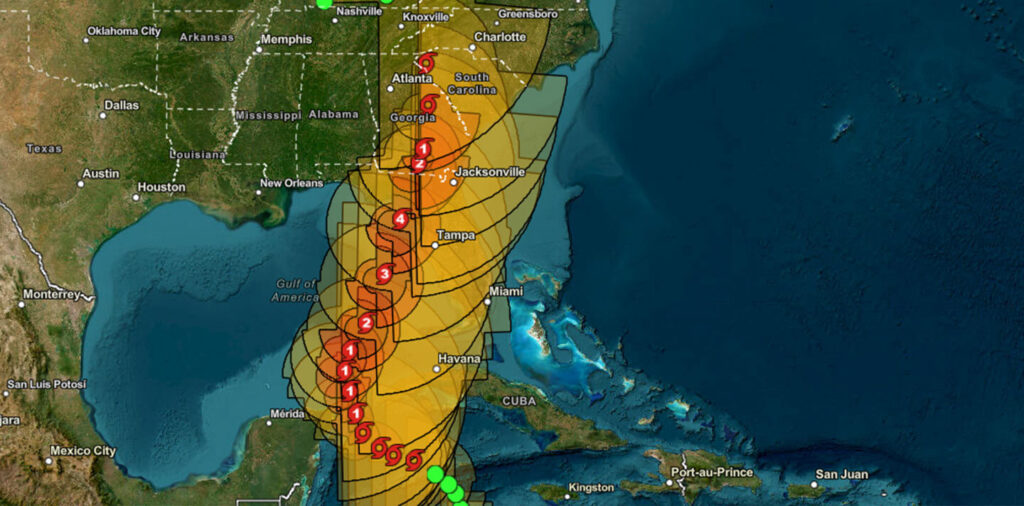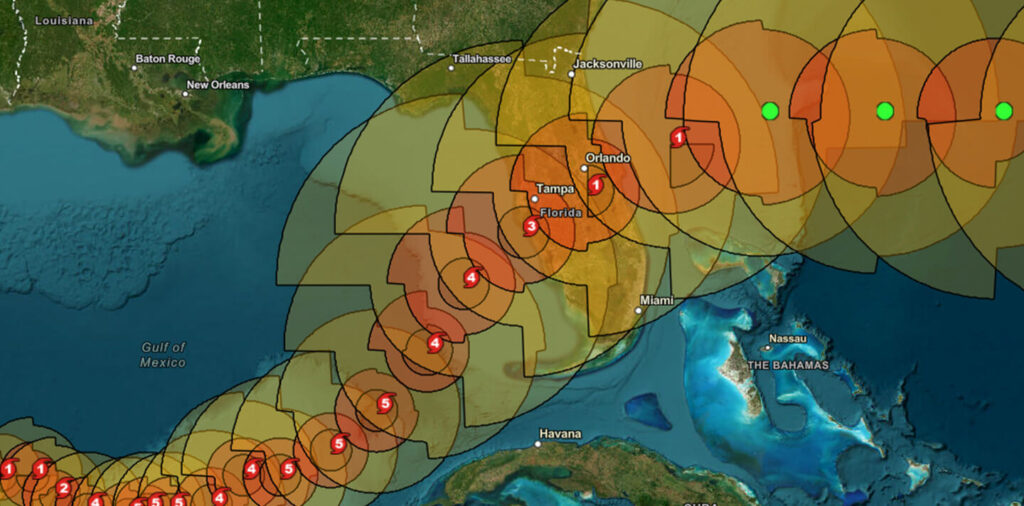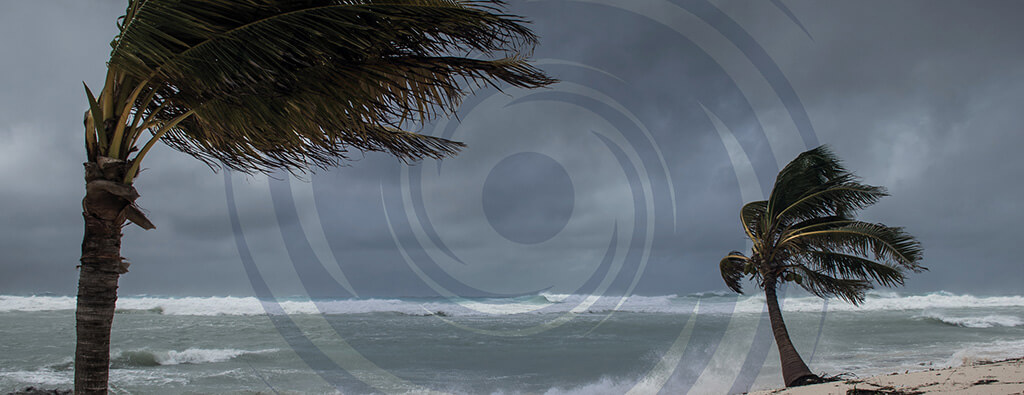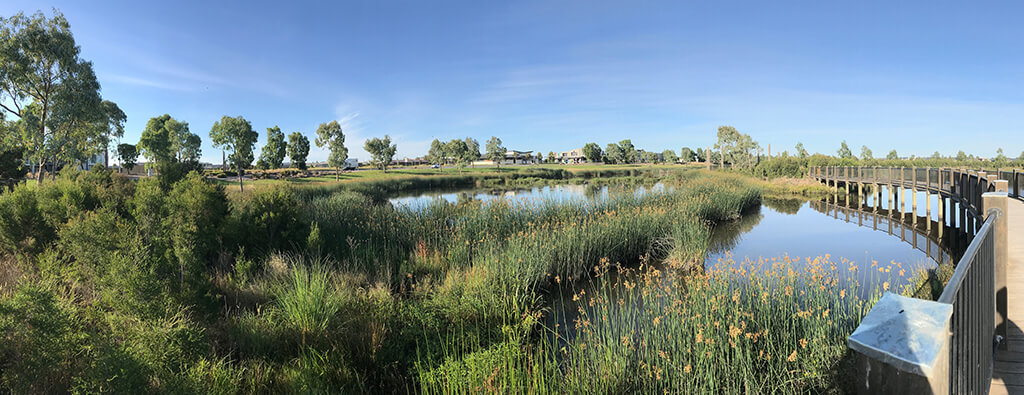The 2025 Atlantic hurricane season is predicted to bring significant activity, continuing trends observed in recent years.
Spanning June 1 to November 30, this period requires preparation and vigilance, especially with recent increases in natural disasters.
In this article, we’ll explore forecasts, the official list of storm names, and actionable steps for local governments and residents to stay prepared.
What to Expect in the 2025 Atlantic Hurricane Season
Experts anticipate that the 2025 Atlantic hurricane season will be very active, following recent years of elevated storm activity. According to projections from Colorado State University (CSU) and The Climate Adaptation Center Inc. (CAC), conditions are expected to remain conducive to the formation of numerous storms.
Both organizations are forecasting 17 named storms, which aligns closely with the 18 named storms recorded during the 2024 season.
In terms of hurricane formation, CSU predicts a total of 9 while CAC expects 10, both slightly below 2024’s count of 11. However, these numbers still point to an above-average level of activity compared to historical norms.
Major hurricanes (classified as Category 3 or higher) are still a major concern. CSU projects 4 major hurricanes for 2025, while CAC forecasts 5, matching the 5 major hurricanes observed during the 2024 season.
The 2025 Atlantic Hurricane Season Names
The World Meteorological Organization (WMO) assigns hurricane names to improve communication and reduce confusion during storm tracking.
The names for the 2025 season are selected from a pre-established list.
2025 Named Storms List
- A – Andrea
- B – Barry
- C – Chantal
- D – Dexter
- E – Erin
- F – Fernand
- G – Gabrielle
- H – Humberto
- I – Imelda
- J – Jerry
- K – Karen
- L – Lorenzo
- M – Melissa
- N – Nestor
- O – Olga
- P – Pablo
- R – Rebekah
- S – Sebastien
- T – Tanya
- V – Van
- W – Wendy
The Risks of Hurricane Season
Understanding the risks hurricanes pose helps communities and governments prioritize protective measures.
Here are a few common risks of hurricanes:
- Storm surge consists of powerful, storm-driven waves that can lead to coastal flooding, submersion of homes and infrastructure.
- High winds can tear off roofs, topple power lines, and severely damage homes, businesses, and critical infrastructure, disrupting daily life and emergency services.
- Heavy rainfall from hurricanes can cause rivers and stormwater systems to overflow, inundating urban and rural areas, damaging property, and creating hazardous conditions.
How Local Governments Can Prepare
Local governments play a crucial role in hurricane preparedness by coordinating resources, educating residents, and enhancing community resilience.
Develop Emergency Plans
Create tailored strategies that address the specific needs of different communities, including evacuation routes and communication protocols.
Reinforce Infrastructure
Invest in strengthening critical infrastructure such as levees, drainage systems, and emergency shelters to minimize damage and protect residents.
Illinois Builds Resilience
In 2008, severe flooding overwhelmed Niles, Illinois, damaging infrastructure and leading to a federal disaster declaration.
To address future risks, the village launched its Stormwater Relief Program, its largest infrastructure initiative. This proactive approach improved resilience against future flooding.
Run Practice Drills
Conduct regular simulations of hurricane scenarios to test and improve response plans, ensuring efficiency during actual emergencies.
Lessons from Previous Atlantic Hurricane Seasons
Past hurricane seasons serve as powerful reminders of the importance of preparedness, offering examples of effective strategies and areas for improvement.
Communities across the Atlantic basin faced various challenges in prior hurricane seasons, from managing storm surges and inland flooding to addressing evacuation and communication gaps.
By reflecting on these experiences, organizations and local governments can adopt stronger measures for the 2025 hurricane season.
The Impacts of Hurricane Helene

Hurricane Helene made landfall on September 26, 2024, southwest of Perry, Florida, as a Category 4 storm with winds of 140 mph.
It was the strongest hurricane to ever hit Florida’s Big Bend region.
Its large size caused widespread wind damage and flooding across Florida’s Gulf Coast. Storm surge peaked at 9.63 feet, with Key West seeing 1 to 3 feet of surge. Around 1.3 million Floridians lost power, and the state reported 34 fatalities.
Helene also caused severe damage in the southeastern U.S., particularly in western North Carolina, where towns were destroyed, roads became impassable, and power outages persisted. The total death toll across six states exceeded 225.
The storm highlighted the need for better infrastructure, such as improved drainage and elevated roadways.
It also exposed room for improvement in flood maps, as some “safe” neighborhoods were inundated, emphasizing the need for real-time flood prediction tools.
Lessons from Hurricane Milton

Hurricane Milton struck near Siesta Key, Florida, at 8:30 PM EDT on October 9, 2024, as a Category 3 storm with winds of 115 mph.
Earlier, it had rapidly intensified to Category 5 with winds over 160 mph before weakening.
Milton caused major flooding and wind damage across Florida. Storm surge of 5 to 10 feet affected areas along the Gulf Coast. Milton’s outer rainbands triggered a tornado outbreak, with one deadly tornado near Fort Pierce.
Over three million Floridians lost power, boil water notices were issued across Tampa Bay for days, and Tropicana Field in St. Petersburg lost its roof. The storm claimed 32 lives in Florida.
Milton’s rapid intensification highlighted the need for improved storm forecasting and better evacuation alerts and communication.
Both Hurricane Milton and Helene were so destructive that the World Meteorological Organization permanently retired their names.
Mitigation Efforts Post-Disaster
In August 2017, Hurricane Harvey inundated the Houston area with over 50 inches of rainfall, leading to catastrophic flooding and approximately $131.3 billion in damages.
In response, Houston and Harris County have undertaken significant flood control initiatives.
Houston has allocated funds toward various infrastructure projects aimed at mitigating flood risks and the Harris County Flood Control District is evaluating a $30 billion underground stormwater tunnel project designed to alleviate flooding in vulnerable areas.
How Individuals Can Stay Informed During Hurricane Season
Access to accurate and reliable information is essential for reducing the risks and impacts of hurricanes.
Both residents and officials should rely on trusted sources and real-time updates to make timely decisions and implement effective safety measures during the hurricane season.
Trusted Platforms
- NOAA Weather Radio: Offers real-time alerts and updates on evolving weather patterns, ensuring timely information during emergencies.
- FEMA App: Delivers emergency alerts, preparedness tips, and resources to help individuals and families stay informed and ready.
- Local Government Websites: Provide crucial updates on evacuation routes, shelter locations, and localized emergency instructions to guide community members during disasters.
Building Resilience for 2025
Resilience extends beyond strengthening physical infrastructure. It also involves creating community-wide engagement and providing education on hurricane preparedness.
Local governments can empower residents with knowledge and resources while implementing effective disaster planning to help mitigate risks and enhance collective response and recovery efforts.
- Preparedness Workshops: Organize interactive sessions to educate residents on emergency plans, evacuation routes, and disaster readiness.
- Nonprofit Partnerships: Collaborate with local nonprofits to distribute emergency kits and provide resources to underserved populations.
- Public Surveys: Conduct surveys to identify community vulnerabilities, gather feedback, and prioritize areas for improvement in disaster preparedness efforts.
- Enhance Agency Coordination: Strengthen collaboration between federal, state, and local agencies to improve response efficiency and resource distribution during emergencies.
- Increase Recovery Funding: Allocate additional resources to post-disaster recovery programs to support rebuilding efforts and reduce the long-term impact on affected communities.
An Emergency Management Consultant’s Role in Hurricane Preparedness
Disaster recovery firms like Tidal Basin partner with local governments and organizations to enhance disaster resilience by developing comprehensive preparedness plans, coordinating effective response efforts, and supporting recovery initiatives.
These collaborations help communities become better equipped to handle the challenges of hurricane seasons.
Services to look for include:
- Comprehensive Emergency Plans: Develop customized strategies that address the unique needs of communities, including evacuation protocols and resource allocation.
- Training and Drills: Conduct simulations and training sessions to prepare residents, organizations, and responders for effective storm response.
- Post-Storm Recovery Assistance: Support communities in rebuilding efforts and navigating federal aid programs to accelerate recovery and resilience.
Proactive Preparedness for a Safer Hurricane Season
By applying lessons from past seasons, leveraging technology, and staying informed, communities and local governments can better navigate the challenges of the upcoming 2025 Atlantic hurricane season.
For expert guidance on hurricane preparedness, contact Tidal Basin today to learn how we can support your organization in building resilience against natural disasters.



